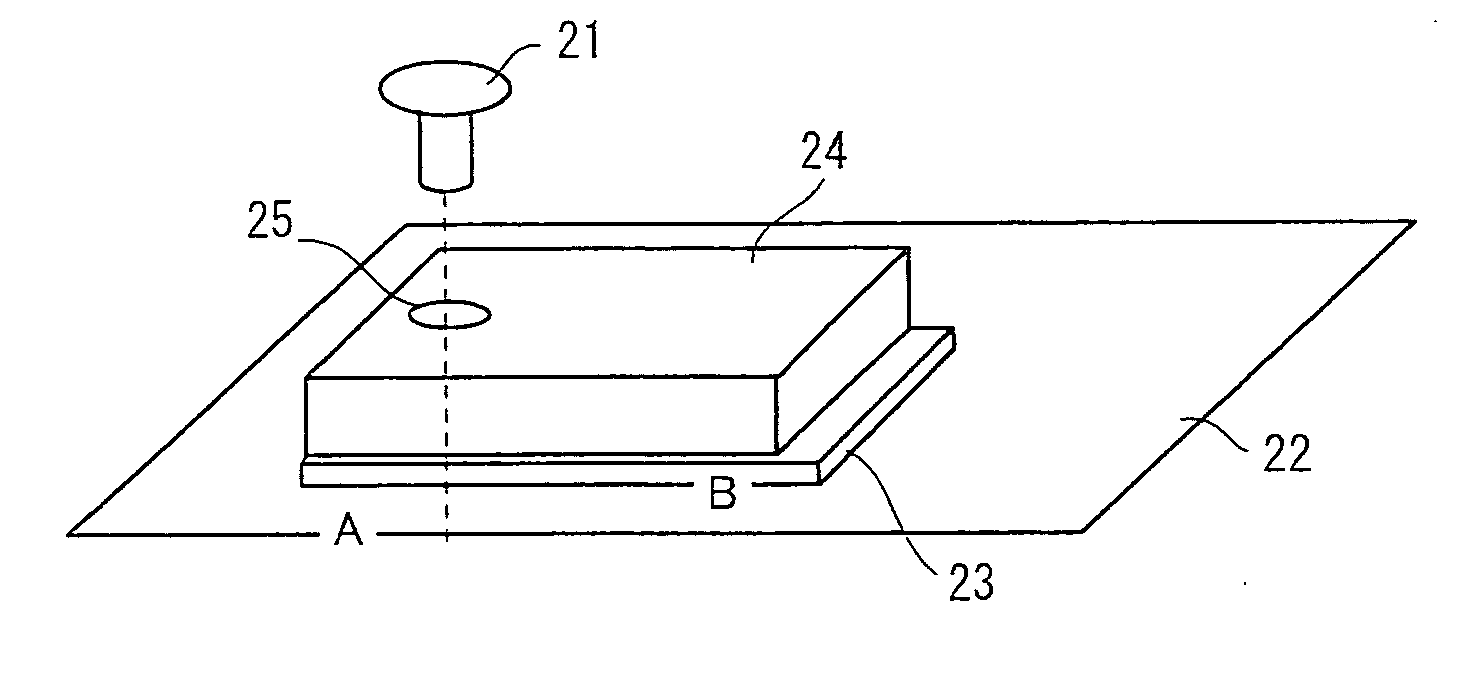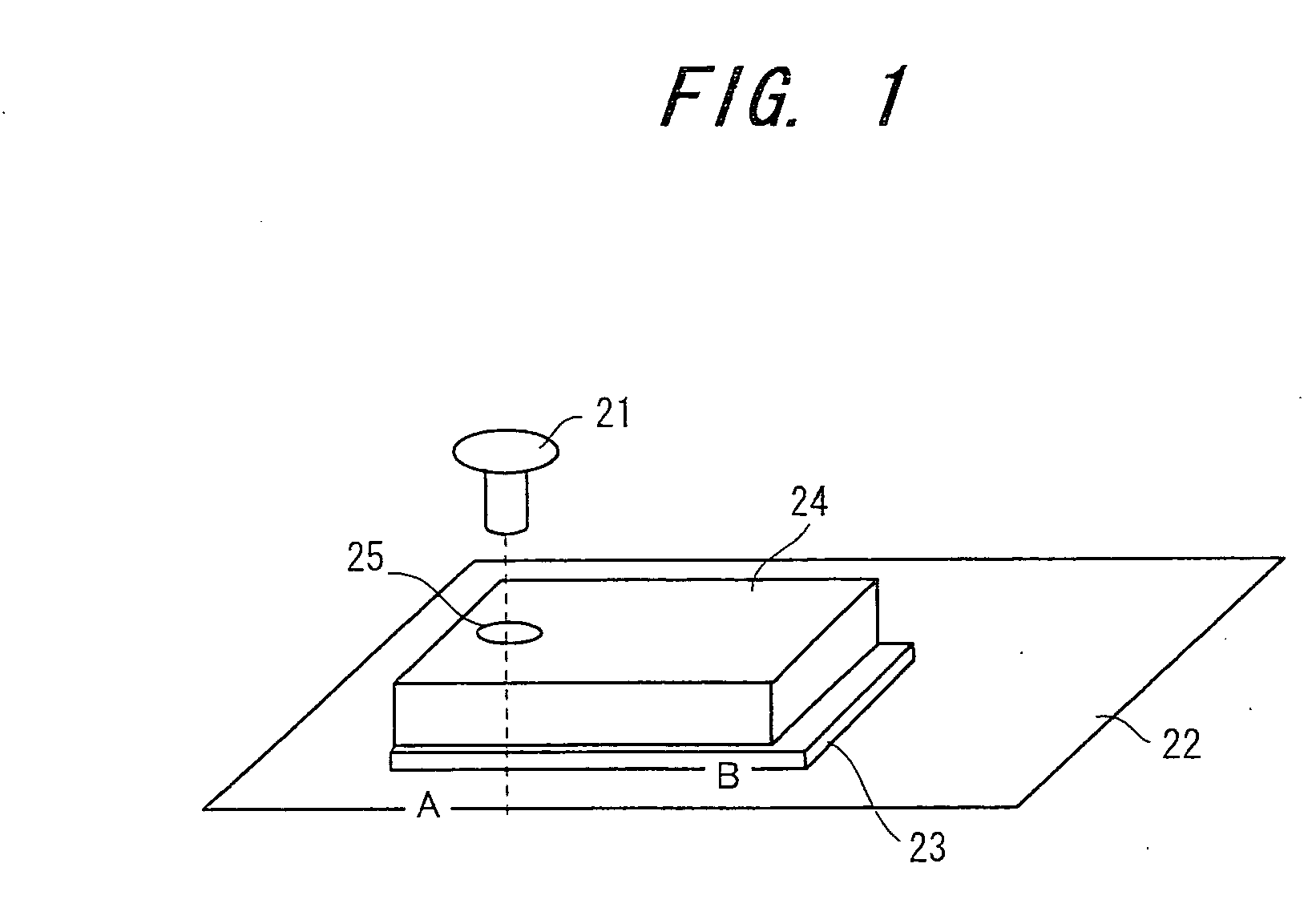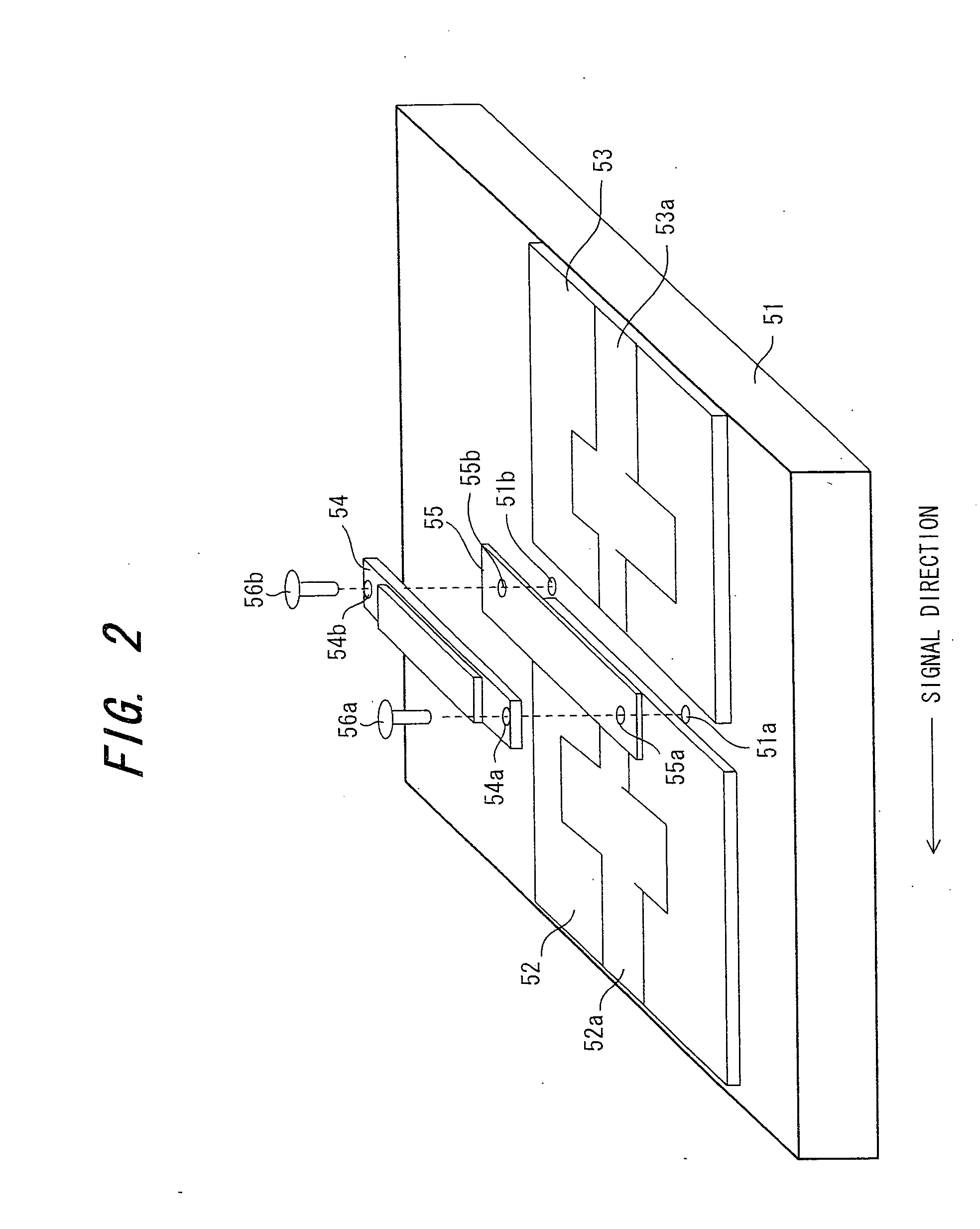Mounting structure
- Summary
- Abstract
- Description
- Claims
- Application Information
AI Technical Summary
Benefits of technology
Problems solved by technology
Method used
Image
Examples
first embodiment
(B) First Embodiment
[0066]FIG. 2 is an exploded perspective view illustrating a package mounting structure according to a first embodiment, FIG. 3 a sectional view in case of sectioning along signal direction, and FIG. 4 a diagram for describing sizes of a package and graphite sheet. Circuit boards 52, 53 on which microstrips have been patterned are placed on a case (heat sink) 51, which serves as a heat-dissipating member, so as to sandwich a package 54 between them. Further, screw holes 51a, 51b for attaching the package are formed in the case 51.
[0067] The package 54 internally incorporates at least one of a high-frequency transistor, MIC and MMIC used in the microwave to-millimeter-wave band. The package has the external shape of a projection and the base portion thereof is formed at both ends to have holes 54a, 54b through which screws 56a, 56b for attaching the package are inserted. Further, packet input / output terminals 54c, 54d (not shown in FIG. 2; refer to FIG. 3) are for...
second embodiment
(C) Second Embodiment
[0079] In the first embodiment of FIG. 2, the case 51 is not formed to have a package accommodating portion and therefore positioning the sheet 55 and package 54 when the package is mounted is difficult. FIG. 14 is an exploded perspective view illustrating a package mounting structure according to a second embodiment, FIG. 15A is a sectional view taken along line AA′ when sectioning is performed along the signal direction, and FIG. 15B is a sectional view taken along line BB′ when sectioning is performed at right angles to the signal direction. Portions identical with those shown in FIGS. 2 and 3 are designated by like reference characters. This embodiment differs from the first embodiment in that the case 51 is formed to have a package accommodating portion 60. Providing the package accommodating portion 60 makes it possible to position the sheet 55 and package 54 in simple fashion merely by placing them in the accommodating portion 60 when the package is mount...
third embodiment
(D) Third Embodiment
[0080] In the second embodiment, no problems whatsoever arise since a sheet having a size the same as that of the package base need only be set in the accommodating portion 60. However, there are cases where the sheet 55 is laid integrally on the case on the entirety of the locations that bear the package 54 and circuit boards 52, 53, and the package and circuit boards are grounded by the sheet. In such cases, right-angle steps 61 exist at four sides between the location that bears the package 54 and the locations that bear the circuit boards 52, 53, as evident from FIGS. 15A, 15B. Owing to the right-angle steps, the thin sheet 55 is severed by the right-angle portions of the steps 61 when the circuit boards 52, 53 are installed following the laying of the sheet and then the package 54 is set upon the sheet and is fastened by the screws 56a, 56b. Accordingly, in the third embodiment, if steps 61 exist between the package-bearing location and circuit-board-bearing...
PUM
 Login to View More
Login to View More Abstract
Description
Claims
Application Information
 Login to View More
Login to View More - R&D
- Intellectual Property
- Life Sciences
- Materials
- Tech Scout
- Unparalleled Data Quality
- Higher Quality Content
- 60% Fewer Hallucinations
Browse by: Latest US Patents, China's latest patents, Technical Efficacy Thesaurus, Application Domain, Technology Topic, Popular Technical Reports.
© 2025 PatSnap. All rights reserved.Legal|Privacy policy|Modern Slavery Act Transparency Statement|Sitemap|About US| Contact US: help@patsnap.com



